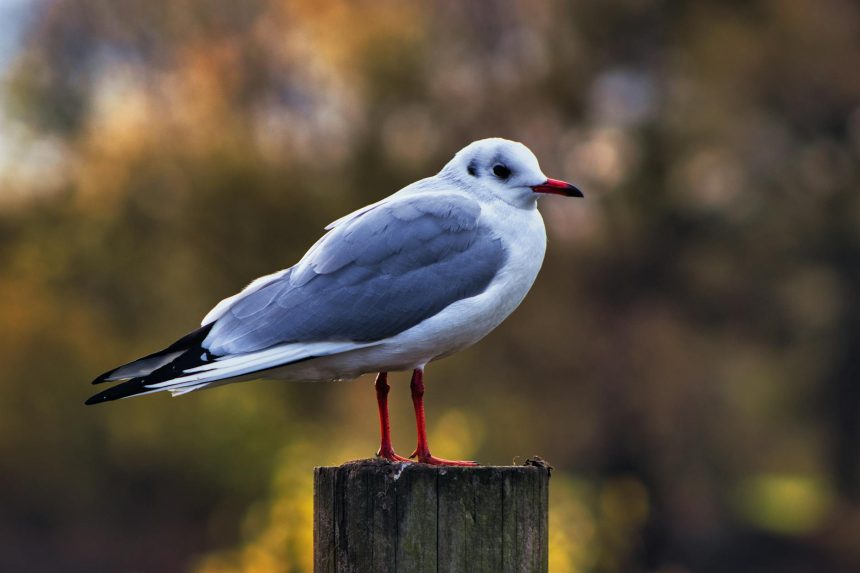bird-migration
Bird Migration: How Autumn Gales Bring Rare UK Bird Sightings?
Every year, millions of birds undertake incredible journeys, defying vast distances and natural barriers in what we know as bird migration. These epic movements are among nature’s most spectacular phenomena, driven by an innate quest for food and suitable breeding grounds. But what happens when these meticulously planned routes are disrupted by powerful forces? This autumn, fierce gales have once again reshaped the skies, diverting migrating birds and creating a flurry of excitement among UK birdwatchers. Prepare to discover how these natural events lead to unexpected and often thrilling avian encounters right on our shores.
Unraveling the Mysteries of Bird Migration
The annual phenomenon of bird migration is far more than just a seasonal shift; it’s a complex dance of instinct, navigation, and survival. Birds travel thousands of miles, crossing continents and oceans, guided by an internal compass that still baffles scientists. Understanding these journeys helps us appreciate the resilience of avian species and the delicate balance of their ecosystems.
Why Do Birds Migrate?
Birds migrate primarily to access optimal resources throughout the year. As seasons change, so do the availability of food, water, and safe breeding locations. Here are the key drivers:
- Food Availability: Many insectivorous birds leave temperate regions as insects disappear in winter, heading to warmer climates where food is abundant.
- Breeding Grounds: Long days in northern summers provide ample time for foraging and raising young, free from many predators found in tropical regions.
- Predator Avoidance: Migrating can help birds escape areas with high predator densities during vulnerable stages of their life cycle.
- Climate: Escaping harsh winters or excessively hot summers ensures survival and reproductive success.
Navigational Wonders: How Birds Find Their Way
The precision with which birds navigate their migratory patterns is astonishing. They employ a sophisticated toolkit of senses:
- Magnetic Field Detection: Birds can “see” the Earth’s magnetic field, using it as a compass.
- Solar Compass: The position of the sun, even on cloudy days, provides directional cues.
- Stellar Compass: At night, certain bird species use constellations, particularly Polaris, to orient themselves.
- Olfactory Cues: Some birds may use their sense of smell to identify familiar landmarks or their home territories.
- Visual Landmarks: Rivers, coastlines, and mountain ranges serve as crucial visual guides for many species.
Weather’s Unpredictable Influence on Migratory Patterns
While birds are incredibly adept at navigating, even the most seasoned travelers can be thrown off course by extreme weather. This is where the magic happens for birdwatchers, as unusual weather events can lead to extraordinary sightings.
Autumn Gales: A Diverting Force
Powerful autumn gales, like those experienced recently, are notorious for disrupting typical migratory patterns. These strong winds can push birds hundreds, even thousands, of miles off their intended flyways. For birds already exhausted from long flights, finding refuge from a storm becomes paramount, often leading them to unexpected coastal areas or inland habitats they wouldn’t normally visit. This phenomenon is particularly exciting for birders in the UK, as it often brings species from across the Atlantic or further north in Europe.
Unexpected Visitors: Rare Bird Sightings
When gales hit, the UK becomes a hotspot for “vagrants” – birds that have strayed from their usual routes. These rare bird sightings are the Holy Grail for many birdwatchers. This year, the autumn gales have reportedly brought species like Sabine’s gulls and various phalaropes to British shores, thrilling those lucky enough to spot them. These birds, typically found in open ocean environments or more northerly latitudes, offer a unique opportunity to observe species that would otherwise remain out of reach. For more on specific bird species and their movements, visit resources like the RSPB website.
Becoming a Birdwatching Enthusiast: Spotting Rare Migrants
The thrill of discovering a rare migrant is unparalleled. If you’re looking to join the ranks of dedicated birders, a few essentials will enhance your experience, especially during these exciting periods of weather-induced diversions.
Essential Gear for Birding
To make the most of your birdwatching adventures, consider investing in:
- Binoculars: A good pair (e.g., 8×42 or 10×42) is indispensable for clear views of distant birds.
- Field Guide: A comprehensive guide specific to UK birds will help you identify species.
- Notebook and Pen: For jotting down observations, locations, and dates.
- Appropriate Clothing: Layered, waterproof, and camouflaged clothing is practical for all weather conditions.
- Spotting Scope (Optional): For very distant birds, a scope offers superior magnification.
Ethical Birdwatching Practices
Respecting the birds and their habitats is paramount. Always follow these guidelines:
- Maintain Distance: Do not approach birds too closely, especially if they appear stressed or are nesting.
- Minimize Disturbance: Keep noise levels down and avoid sudden movements.
- Stay on Paths: Protect delicate habitats by sticking to designated trails.
- Do Not Lure Birds with Food: This can disrupt natural foraging behaviors and create dependency.
- Report Rare Sightings Responsibly: Share information with local birding groups, but consider the potential for disturbance before widely publicizing sensitive locations. The British Trust for Ornithology (BTO) is an excellent resource for reporting and learning about bird populations.
The Future of Bird Migration in a Changing Climate
Climate change poses significant threats to established bird migration patterns. Shifting weather systems, altered food sources, and habitat loss are forcing birds to adapt, often with uncertain outcomes. Understanding these challenges is crucial for conservation efforts.
Conservation Efforts and How You Can Help
Protecting migratory birds requires global cooperation. You can contribute by:
- Supporting conservation organizations dedicated to protecting bird habitats.
- Reducing your carbon footprint to mitigate climate change.
- Making your garden bird-friendly with native plants and water sources.
- Participating in citizen science projects, like bird counts, to help monitor populations.
The spectacle of bird migration is a testament to nature’s enduring power. While autumn gales might cause temporary chaos, they also offer a unique window into the incredible journey of these resilient creatures. So, next time the wind howls, grab your binoculars and look to the skies – you might just witness a truly extraordinary visitor.
What rare bird have you spotted due to unusual weather? Share your stories in the comments below!
Uncover the mysteries of bird migration! Learn how powerful autumn gales can divert migrating birds, leading to rare and exciting sightings for UK birdwatchers. Dive into avian journeys.
Image Search Value: “Sabine’s gull phalarope autumn storm UK coast”
Featured image provided by Pexels — photo by Jakub Pabis





![[Bitcoin Daily] 'Canary in the Coal Mine'! After Bitcoin's Historic Collapse, Its Struggles Continue | The report highlights that the recent deleveraging event, totaling $19 billion, is one of the largest in Bitcoin's history, clearing significant ...](https://thebossmind.com/wp-content/uploads/1/2025/10/pexels-photo-30321821-330x220.jpeg)


